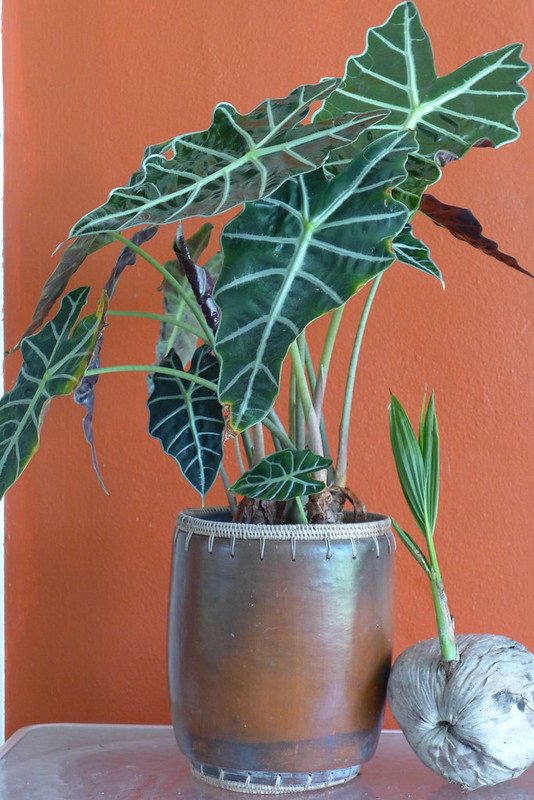If you’re looking to decorate your new windows with fresh ideas, then indoor houseplants are the perfect addition. There is a level of satisfaction that comes with growing window houseplants. From watching them grow from little sprouts to full-blown natural beauties, nurturing houseplants can bring a certain degree of appreciation.
Bringing your windowsill to life with your new houseplants can seem a chore, but there are plenty of easy-to-maintain window plants that can bring your windowsill from dull to fresh with ease and convenience.
Understanding what plants are suitable for the windowsill, and how to grow and maintain each one individually is imperative.
Can plants get enough sunlight through windows?

Every plant, whether indoor or outdoor, requires photosynthesis to survive. It’s a fact most of us learn in school.
Photosynthesis is the process in which plants convert carbon dioxide into oxygen, which we, in turn, breathe in. When a houseplant photosynthesises, it creates its own chemical energy, which in turn the houseplant uses as an energy source for its growth. The plant gets this energy from sunlight.
For houseplants, artificial light from regular bulbs will not suffice (there are specialised lights that are suited for photosynthesis, however). Though your window panes may prevent the UV from the sunlight, the natural energy is still absorbed by your plants. Glass windows still emit enough light from the sun to be beneficial to your plants. In fact, photosynthesis is entirely imperative to your houseplant’s survival!
Light through a window can also be considered indirect light, though it may not seem so imposed upon. In some instances, light intensity when passing through a window can be lessened by 50 per cent!
How to grow plants on a windowsill

Your windowsill is the most naturally lit part of the home and is perfect for nurturing certain houseplants. Knowing the amount of light each of your windows lets in will determine the types of plants you can put on your windowsill.
Different levels of sunlight depend on the direction that your window is facing. With east-facing windows getting the most sunlight in the morning and evening, and south-facing windows getting the most sunlight during the day, it is important to consider what type of plants should go where, and why.
There are many different types of plants that require different levels of sunlight. For some, a south-facing window will work wonders, however, for others, they could burn in the sun and be harmful to the plant.
There are, however, a selection of beautiful plants that will still thrive in a windowsill environment.
Pilea Peperomioides

Also known as the missionary plant, this pilea is a fantastically beautiful addition to any home. Brilliant in the office, these plants grow upwards and outwards towards the light without much care or responsibility. They thrive in lower, indirect sunlight and work best in north-facing rooms. When this plant is healthy and receiving enough light, the leaves will appear a lighter green and remain perky on its stems. Their fleshy leaves will appear darker when the light isn’t receiving enough sunlight, and so is a great indicator for knowing how much light the plant is getting.
Succulents

Succulents are, in some cases, very easy to maintain plants. With little watering needed, these plants thrive on little responsibility. They can be quite hardy plants too. Succulents such as Aloe Vera can survive in less than ideal conditions and are very easy to revive if they become worse for wear.
Succulents are low-growing plants and require little light to thrive. Placing these on a windowsill that does not receive direct sunlight can brighten a south-facing room that may seem dull.
Monstera Obliqua

These smaller alternatives to the Monstera Deliciosa are perfect for windowsills looking to add some fresh life to the room. Also known as the swiss cheese plant, the monstera family of plants are easy to maintain. They prefer humid environments, so consider purchasing a humidifier to keep them happy and healthy. They also enjoy being sprayed, 3 times a day is sufficient. This will keep the leaves healthy and perky and will help it develop the holes seen in most Monstera plants. Keeping these in indirect sunlight is essential, as the leaves will burn in direct sun.
Alocasia x Amazonica

These wonderful plants boast thick, veiny leaves. Their contrasting green leaves provide an edge to most homes that other leafy houseplants may lack. The Elephant Ear plants prefer bright, humid environments, so will thrive on a steamy bathroom windowsill. As this Alocasia begins to develop new leaves, you can witness the colours shift and grow into lush beauty.
Venus Fly Trap

The venus fly traps are fascinating plants. At a first glance, they can be quite scary plants, but they are harmless to humans. These plants prefer sunny, moist environments, as the humidity is respective of its subtropical habitat. Keeping these on the windowsill is lovely for them. It is best to keep on top of watering them, however. They cannot be watered with traditional tap water, and require distilled water. If you can collect rainwater from outside, this is perfect for your venus fly trap!
Growing your first plants can be a daunting task. At first, you never know if you’re watering them enough, or even too much. Be patient! Plants take a while to become accustomed to their new environments, and generally take a while to grow anyway. It is important to keep an eye on them to make sure they aren’t yellowing or browning, but generally, if you follow the correct care instructions, your new windowsill plants will be just fine,

